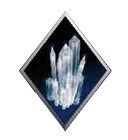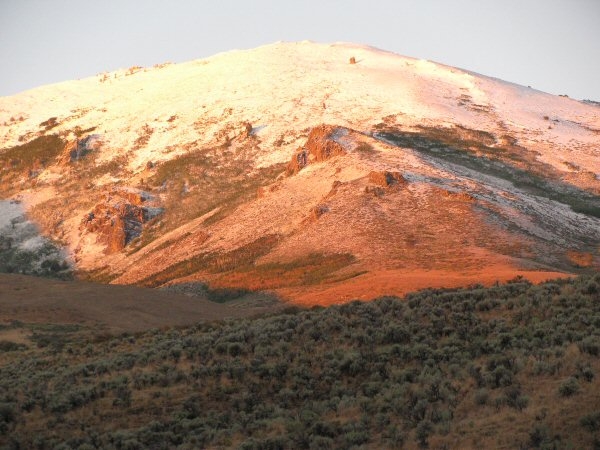
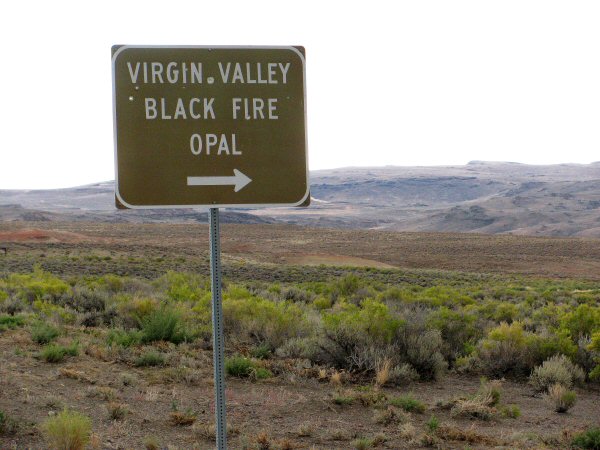
How often do you see a sign like this from the highway? Just over into Nevada, from the Oregon border is a stetch of empty sagebrush country, that is home to a handful of precious opal mines. The opal occurs as wood replacement, and occasionally, as infilling in the ancient wormholes bored in petrified conch fungus. At least three of the mines in the Virgin Valley offer rockhounds the opportunity to fee dig, either in tailings, or in virgin earth.

Just across the highway from the sign for the entrance to the Virgin Valley, a bright, red, jelly colored carnelian can be found in these low rock outcroppings. I think this is some of the nicest carnelian I have seen, being a gummy bear red, but the spot has been rockhounded heavily, and the pickin’s are scant. Still, a diligent search will turn up some of the prized carnelian.
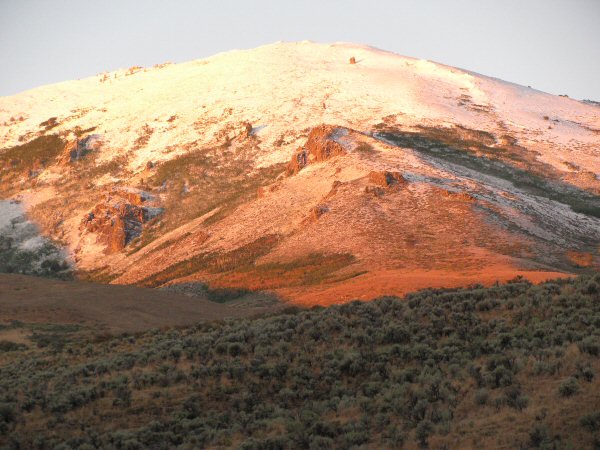
On my way over to Denver, I make camp in the Toiyabe National Forest, in Eastern Nevada. Snow falls in the night, and at dawn, snowline is just shouting distance from my tent.
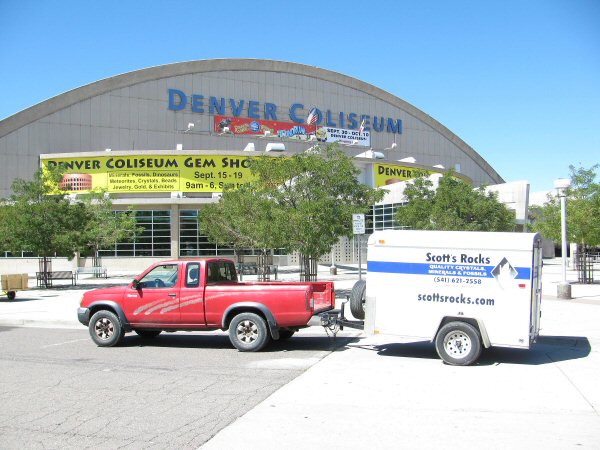
Scotts Rock & Gem makes it to the Denver Coliseum!

An aerial view of the Denver Coliseum, showing it’s proximity to Interstate 70. There is easy access right off the freeway, and during showtime, the site is marked with 5 or 6 large, yellow helium balloons, making it quite visible from a distance.
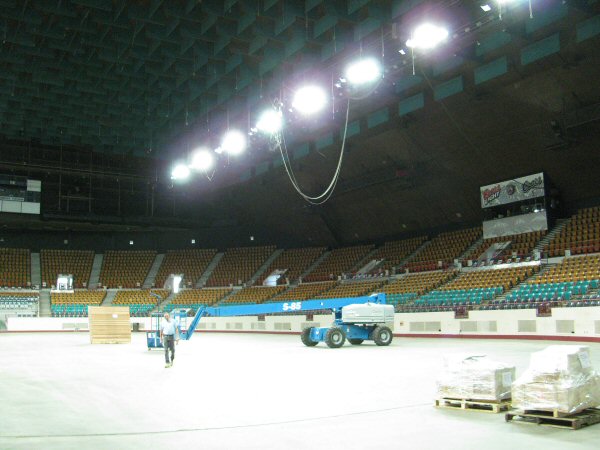
The arena interior of the Denver Coliseum, just prior to show set-up. The large lift will install a Tylosaurus skeleton that will hang from the ceiling during the show.
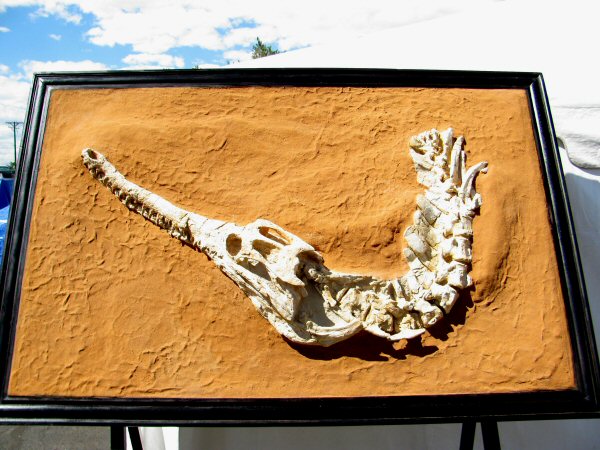
Dyrosaurus phosphaticus – a gorgeous specimen of the extinct, crocodile-like reptile, from the phosphate beds of Khourigba, Morocco. It is rare to find a complete skull, with multiple vertebra. Little is known about this animal, but general consensus puts it’s age at about 50 to 65 million years ago.
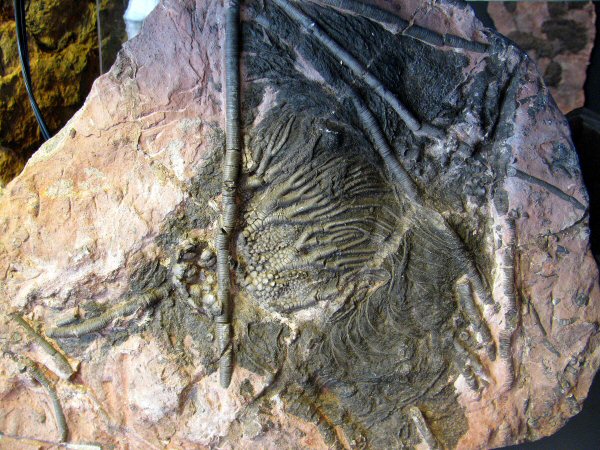
Syphocrinites elegans – The Mt. Issoumour area, of Alnif, Morocco produces what are, in my opinion, some of the finest crinoid specimens that are commonly available. These fossils are laboriously brought up from underground, as deep as 25 meters, and pieced back together into large slabs, that testify as to the beauty of this crinoid. This particular species lived in the Upper Silurian time period, about 420 million years ago. It had a bulbous float structure that allowed this species to be very widespread around the world.
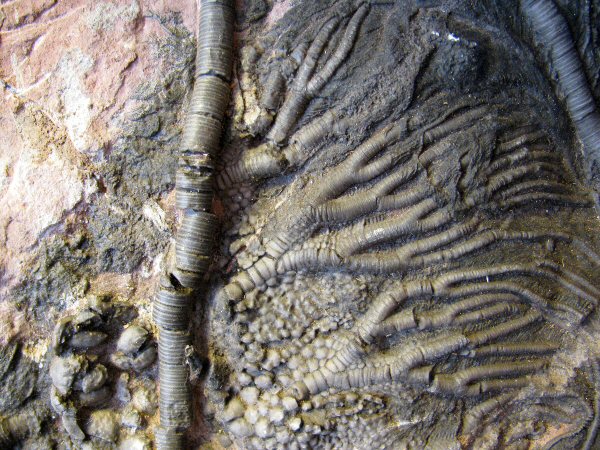
Syphocrinites elegans – detail
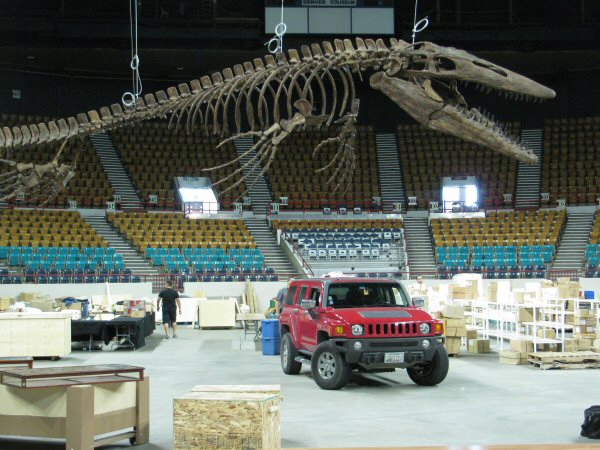
On the arena floor, the Tylosaurus skeleton, one of the most complete mosasaurs collected to date, is now hung from the ceiling, and dwarfs a modern day vehicle. Nicknamed “Sophie”, this giant aquatic lizard weighed in at around 8 tons. Her bones show signs of necrosis (the bends), which means that she swam really deep, and surfaced too fast.
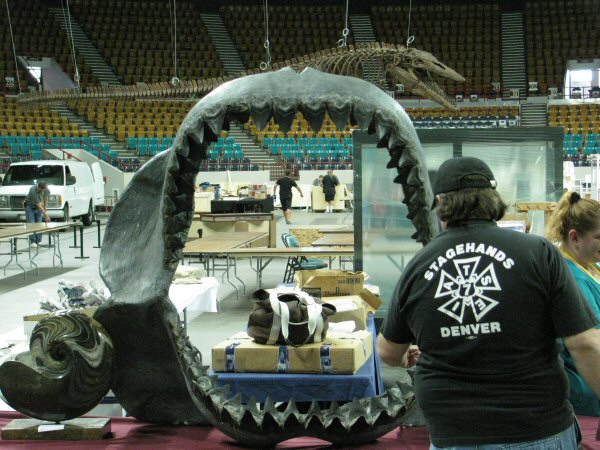
A fabricated jaw of Carcharocles megalodon, an extinct shark from the Miocene time, sports rows of teeth 4 to 5 inches long. It is theorized that this whale eating predator may have gotten as long as 60 feet, and at that size, could take a Volkswagon in one bite.
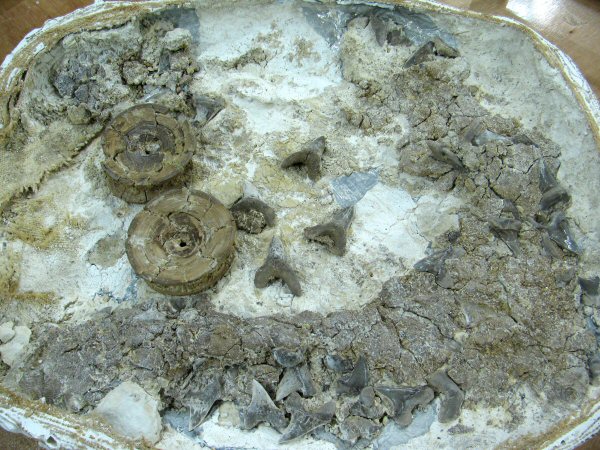
The disarticulated remains of a fossil shark are displayed in a burlap and plaster jacket, showing more or less just how this specimen was found. Sharks are mostly cartilaginous, so any remains other than teeth are relatively rare. This assemblage has multiple teeth, vertebra, and cartilage masses.
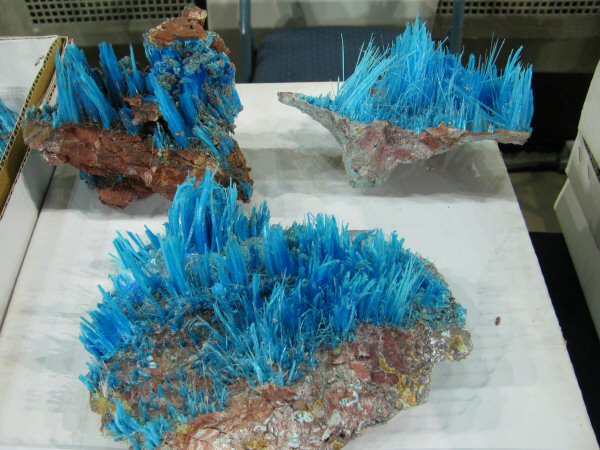
Wonderful chalcanthite specimens from the Planet Mine, in Arizona, collected by Shannon & Sons Minerals. Chalcanthite is a pentahydrate (having 5 waters in it’s chemical formula) and is known to be unstable. These beautiful specimens were painstakingly brought up from deep underground.
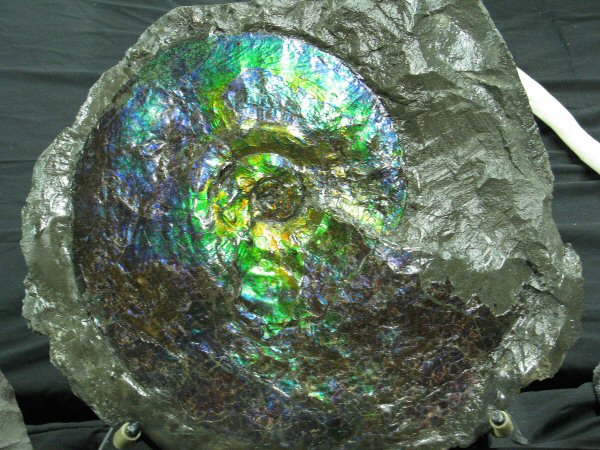
Ammolite is the gem quality nacre, or shell material of particular fossilized ammonite specimens from Canada. Here, a complete specimen shimmers with a radiance of cool greens, blues, and yellows. At it’s best, ammolite is brighter than opal, and typically has broader flashes of color.
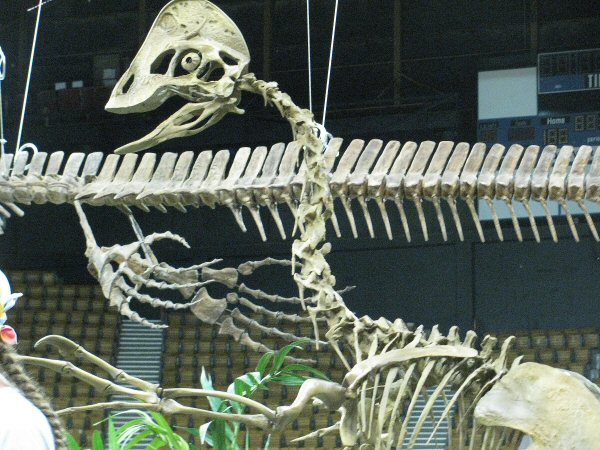
Land and sea unite. The back flippers of Tylosaurus prorigor, seem to reach eerily for the throat of an Oviraptor. One of the last dinosaurs to grace the planet, this newly discovered Oviraptor has yet to be named, and appears to resemble a large, flightless bird. This skeleton is a composite of two incomplete skeletons found near each other in the Hell Creek formation of South Dakota. They are the only two skeletons of their kind known to science.
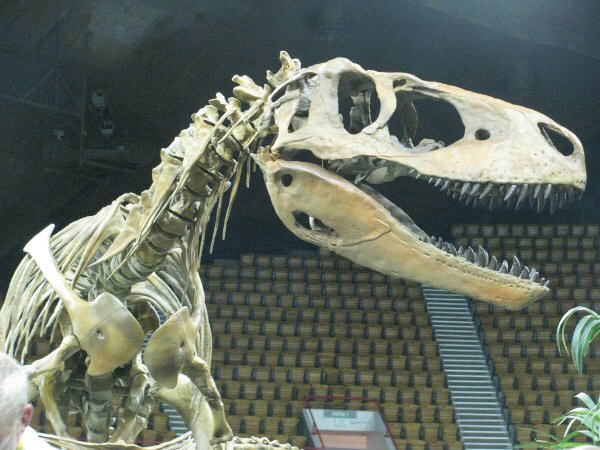
Albertosaurus sarcophagus was a 20 to 25 foot long carniverous dinosaur from the late Cretaceous period of North America. Albertosaurus was a very close relative of Tyranosaurus Rex, living in the same area, and filling the same role as T-rex, but it lived some 10 million years earlier.

The head of Tylosaurus shows its gaping jaw, full of banana sized teeth designed to catch and kill large prey.
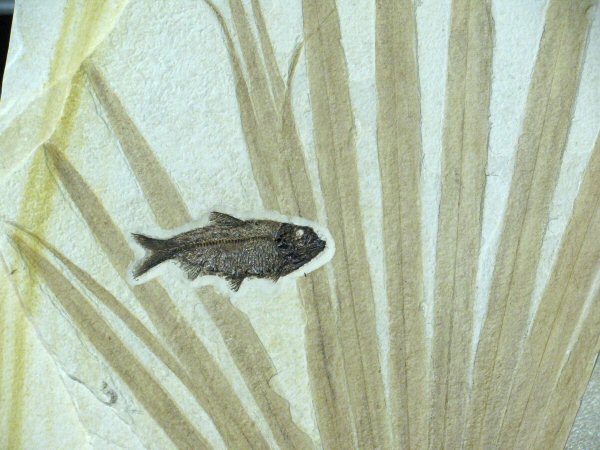
A 50 million year old fish (diplomystus) appears to still be swimming, past a large palm leaf in this gorgeous land and water combination fossil from the Green River formation of Kemmerer, Wyoming.
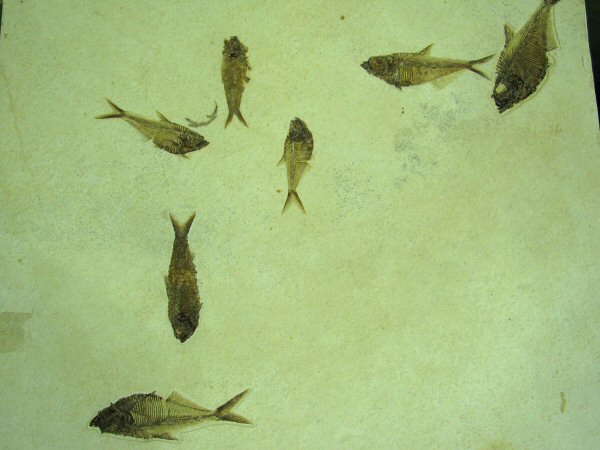
A group of fossil diplomystus appear to have expired together in what is referred to as a mass mortality plate. Wheeler Shale, from the Green River formation of Kemmerer, Wyoming.
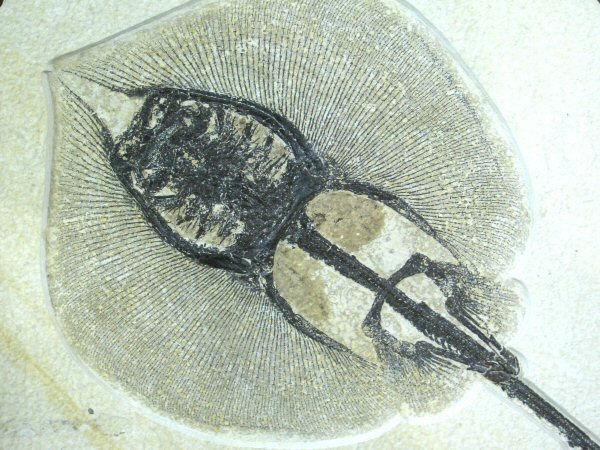
An exquisitely detailed Heliobatus, or freshwater stingray, from the Green River formation of Southwest Wyoming. The ray is a rare, and very sought after fossil from Fossil Lake.
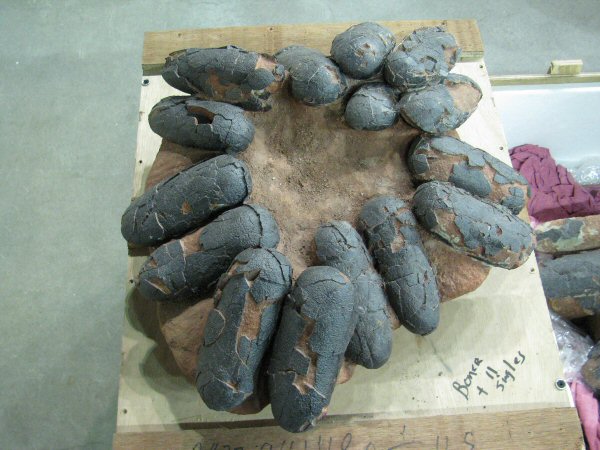
A complete nest of dinosaur eggs, deposited in a circular formation, just as mama oviraptor left them, during the mid to late Cretaceous, 100 to 140 million years ago. This very nicely prepared nest comes from the Gobi Desert region of Mongolia, China.

A very nicely prepped group of megalodon (fossil shark) teeth. Most of these teeth come from Florida, Virginia, and South Carolina. The differences in color are a result of the different locations, with the black ones being more mineralized, due to the nature of the depositional environment.
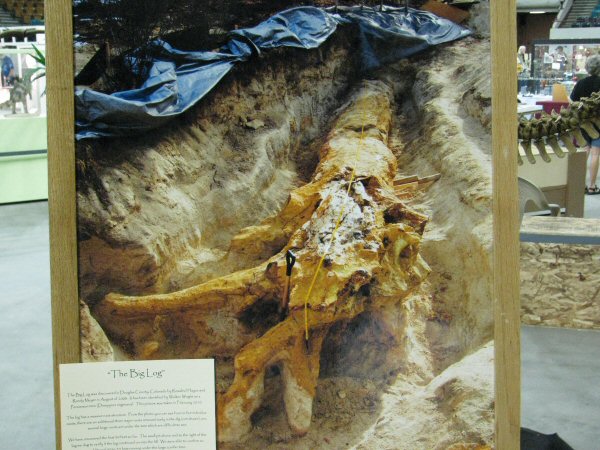
Photograph of a petrified tree being unearthed in the Hell Creek formation of South Dakota.
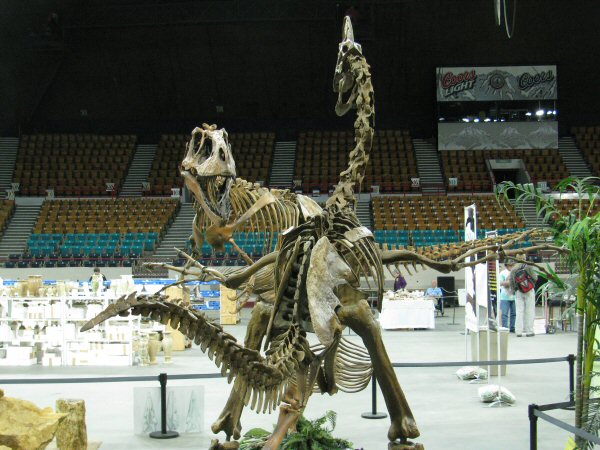
Although these two dinosaurs never lived together in the same time period, the oviraptor’s pose does seem to convey the shock that she would have, if she were suddenly this close to the fierce Albertosaurus.
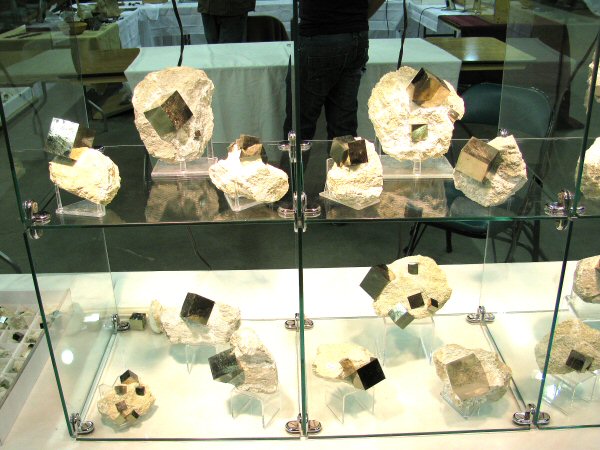
Beautiful large pyrite cubes in a white clay matrix, on display from Navajun, Spain.
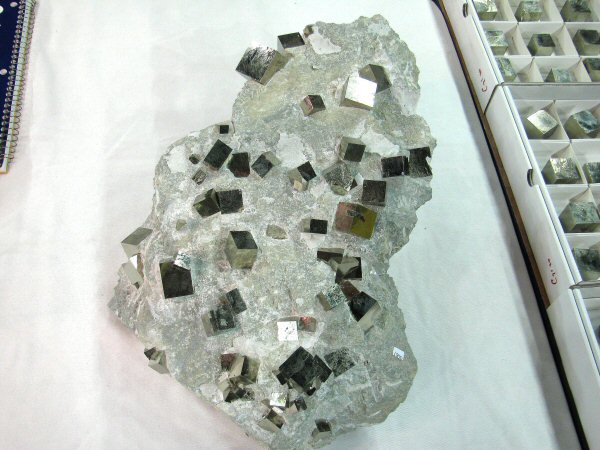
Multiple perfect cubes of pyrite sport mirror smooth surfaces in this fine specimen from the mine at Navajun, Spain.
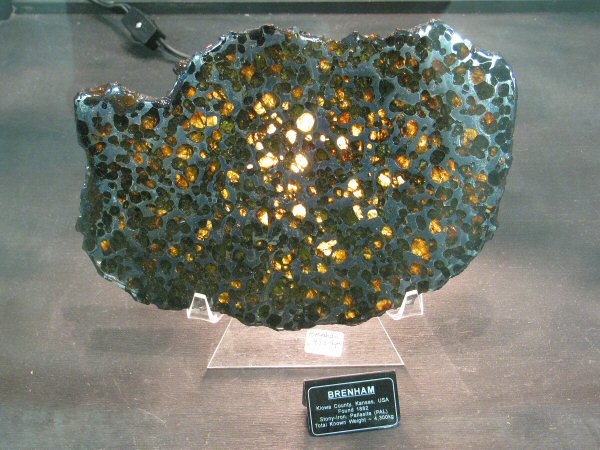
A rare meteorite, the Brenham pallisite from Kiowa County, Kansas. This meteorite has a nickel iron matrix with translucent gem-like peridot crystals.
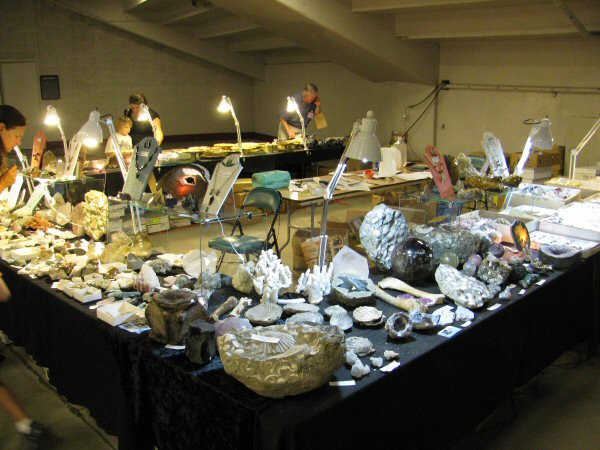
Scott’s Rock & Gem had a very nice, spaceous setup at the Denver Coliseum Show. I brought a variety of Oregon materials, and hand polished over 500 pieces for this show specifically.
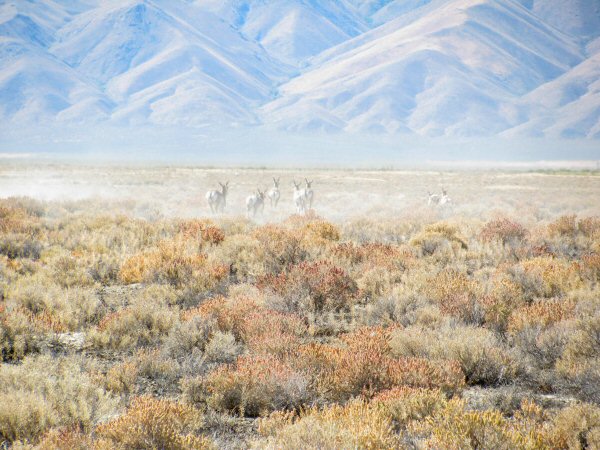
On my way home to Oregon, a group of antelope disappear into the mirage-like expanse of sagebrush in Northern Nevada.
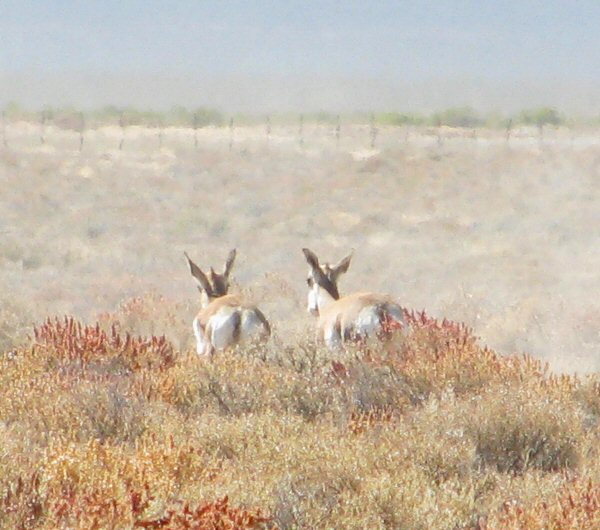
Two antelope blend with the sage, while heat waves turn a distant fenceline into an impressionist painting.
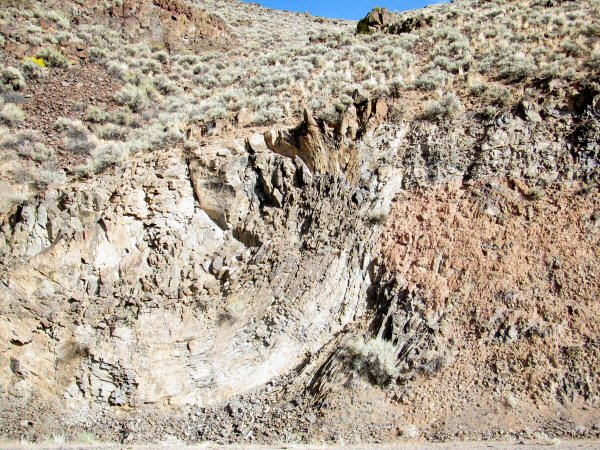
Incredible folded basalts of Dougherty Rim, in Eastern Oregon, testify to the huge upthrust of force that has lifted this fault scarp hundreds of feet into the air above the empty sagebrush basin.
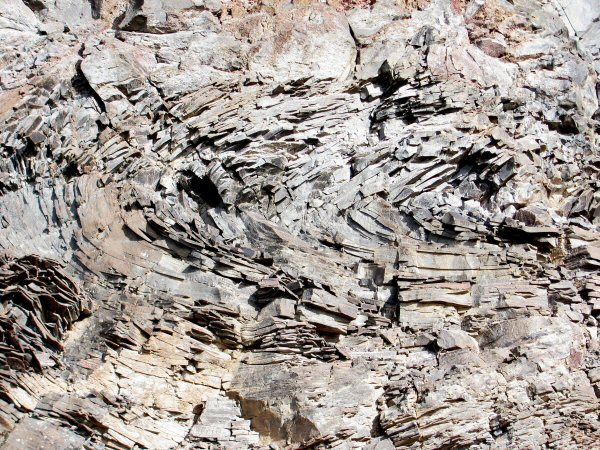
I brake for geology! This is what’s meant by folded rock. These bands of basalt have been folded back upon themselves like a piece of paper.
